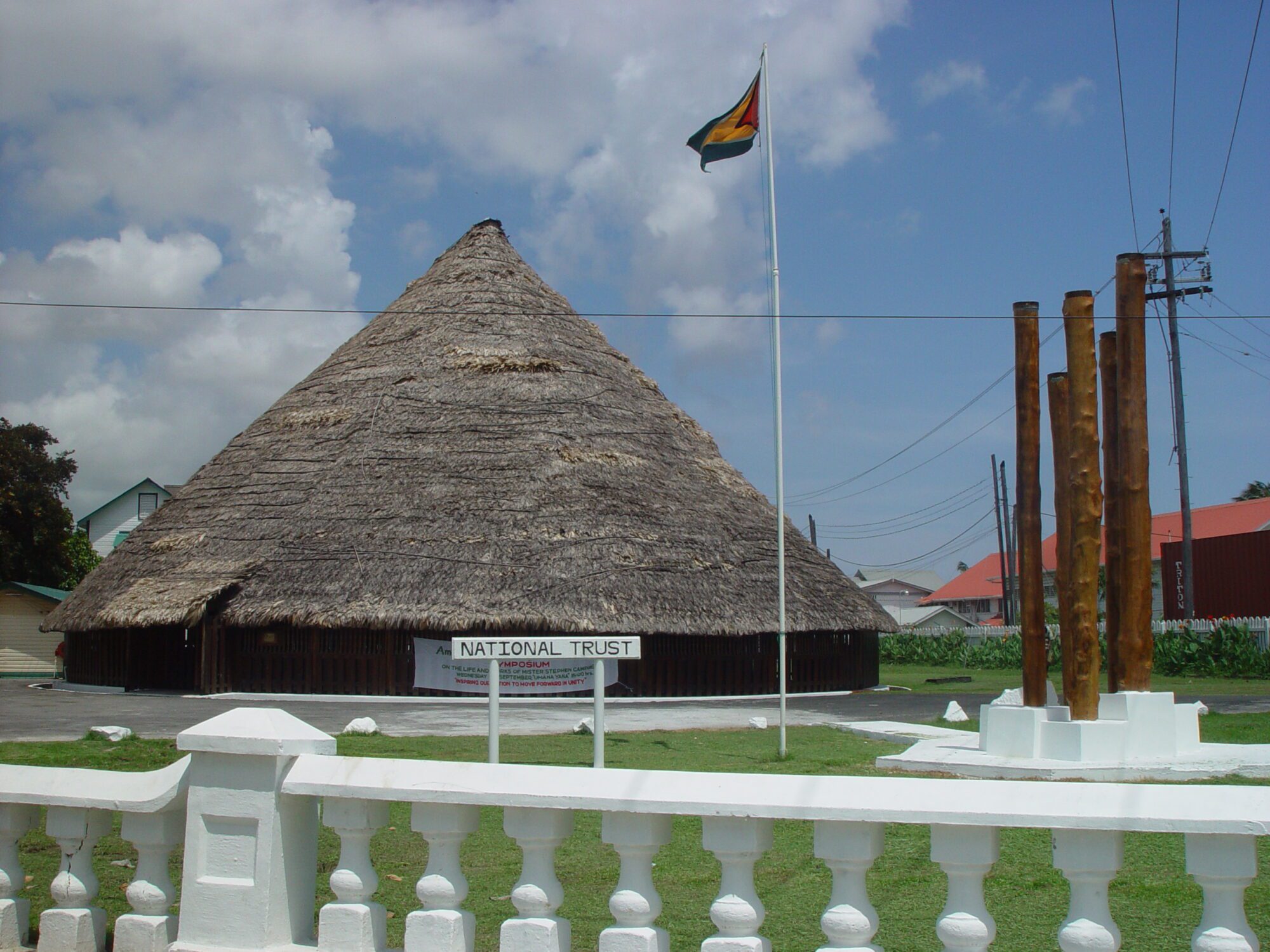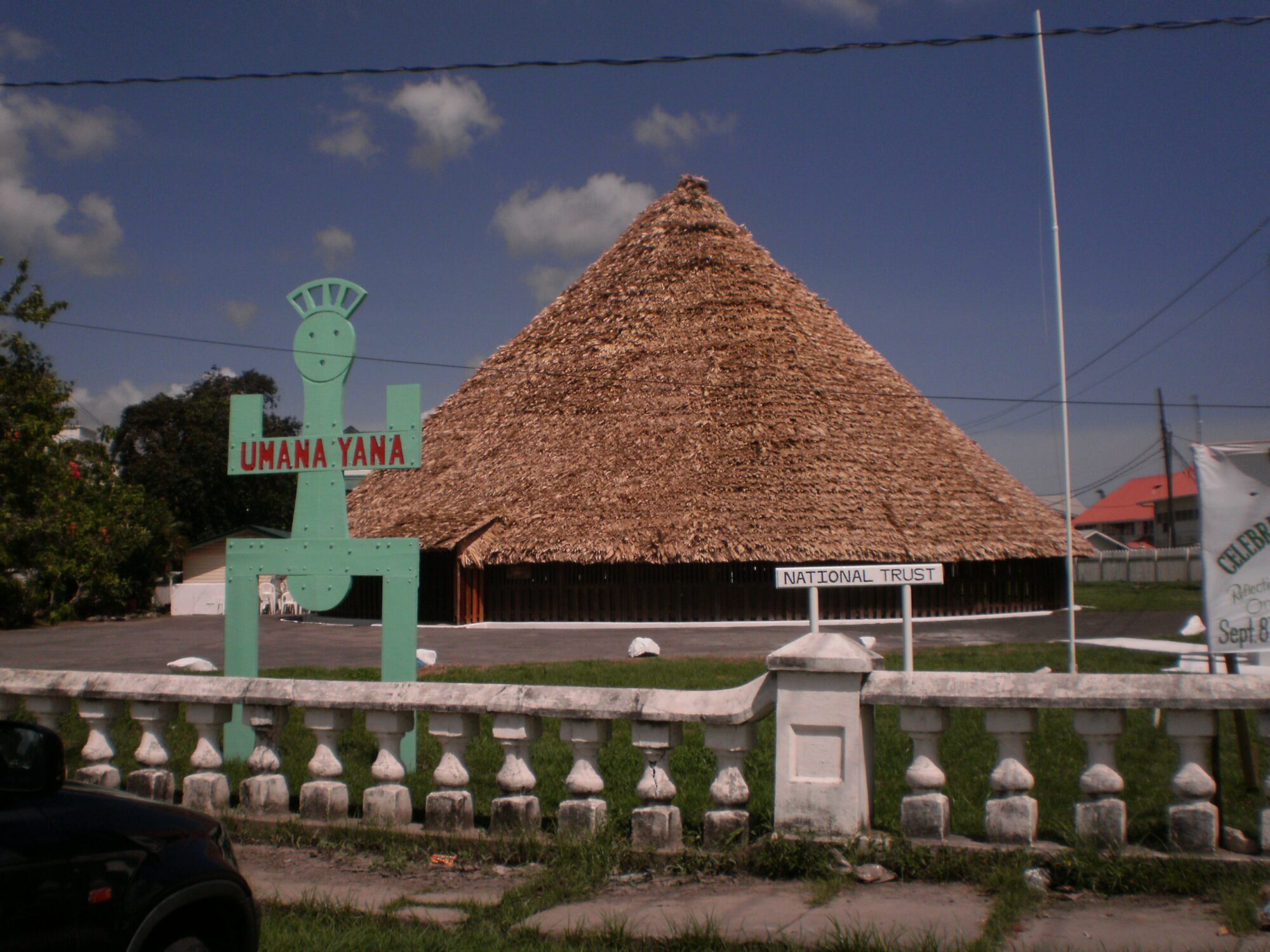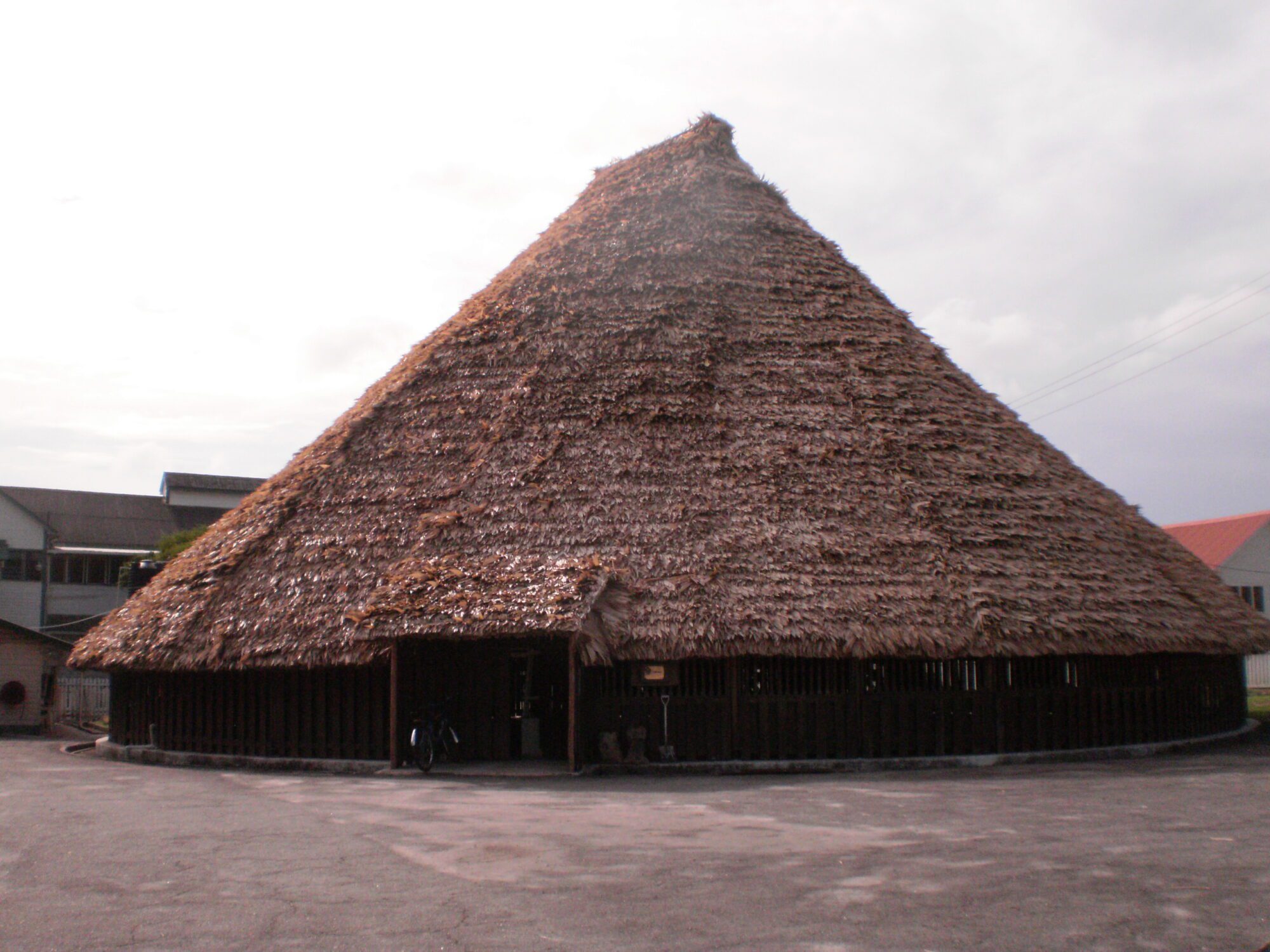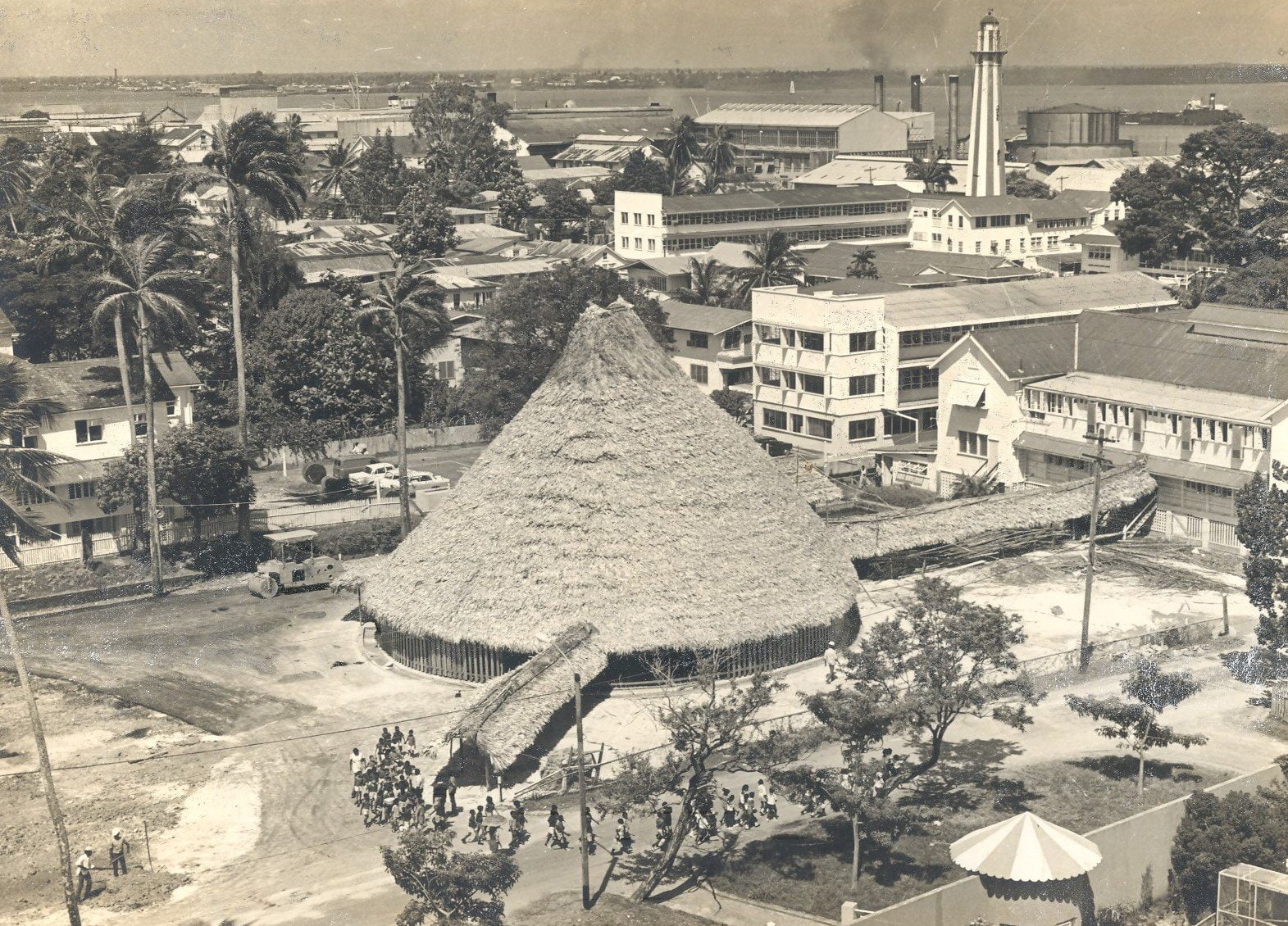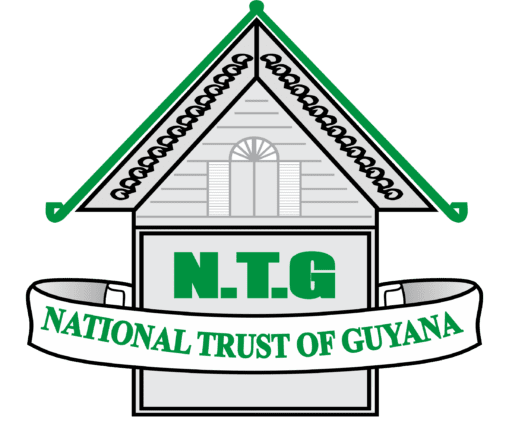Location: Kingston, Georgetown
Classification: Governmental
Period/ Year Built: 2016
Historical Background / Description:
Umana Yana is located on High Street, Kingston, Georgetown. The word Umana Yana is an Indigenous term used by the Wai Wai people to describe the huge benabs they usually congregate in as a meeting place.
The first Umana Yana to be built in the city of Georgetown was erected in 1972. It was designed by Guyanese architect, Mr. George Henry and was built on the site of the old Mariners’ Club. The structure took 80 days to be completed. Approximately 60 Wai Wai men and their leader, Chief Elka were transported from Konashen, Rupununi to Georgetown along with the structure’s core materials to get it constructed. The Ministry of Legal Affairs was charged with the responsibility for the building’s construction. On August 8, 1972, the flags of over 80 nations lined the eastern boundary of the benab as the building became operational for the Non-Aligned Nations meeting, the first of its kind, in Guyana.
Overtime the benab’s condition deteriorated and this caused it to collapse in 1993; it was later rebuilt circa 1995. In April, 2001, the second structure along with the African Liberation Monument was gazetted as a National Monument. This benab, which was smaller than the first, was refurbished in 2003 and was subsequently destroyed by fire on September 9, 2014.
Construction of the third and present Umana Yana started in late 2015 and was completed in 2016. A group of 35 men (inclusive of three cooks) were transported from Maskenari, South Rupununi under the supervision of Toshao Paul Chekema, nephew of Chief Elka, to complete the roof of the benab. The men used a combination of modern and traditional Indigenous techniques, materials and tools. This Umana Yana varies from the first structure of 1972; the size is now 23.5 metres (77 feet) compared to the original size of 26.6 metres (87 feet), the roofing is of dhalibanna leaves while it was troolie leaves in the 1970s.
The Ministry of Indigenous Peoples Affairs along with the Ministry of Public Infrastructure spearheaded the construction in close consultations with the Ministry of Education (now Ministry of Social Cohesion), Department of Culture and the National Trust of Guyana.
